Primary, secondary education in Australia for international students
- Education information
- What you should know about secondary Education in Australia
- The Structure of Australian Education
- School Options for foreign students in Australia
- Admission to the Top Australian Schools
- Top 10 Australian Schools. Key features for Foreign Students
- Secondary schools in Australia. Cost and Fees for Foreign Students
- Literature and references
-
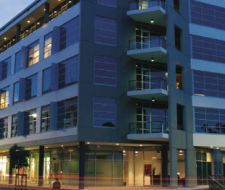 from 38800.00 $AUD / yearApply with documents
from 38800.00 $AUD / yearApply with documents -
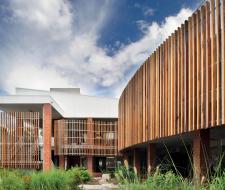 from 44840.00 $AUD / yearApply with documents
from 44840.00 $AUD / yearApply with documents -
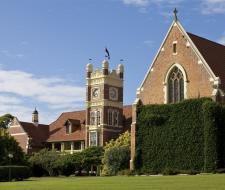 from 29519.00 € / semesterApply with documents
from 29519.00 € / semesterApply with documents -
 from 53124.00 $AUD / yearApply with documents
from 53124.00 $AUD / yearApply with documents -
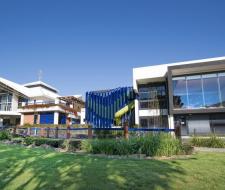 from 42200.00 $AUD / yearApply with documents
from 42200.00 $AUD / yearApply with documents -
 from 36380.00 $AUD / yearApply with documents
from 36380.00 $AUD / yearApply with documents -
 Apply with documents
Apply with documents -
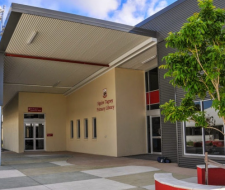 from 24138.00 $AUD / yearApply with documents
from 24138.00 $AUD / yearApply with documents -
 from 12000.00 $ / semesterApply with documents
from 12000.00 $ / semesterApply with documents -
 from 7960.00 $AUD / termApply with documents
from 7960.00 $AUD / termApply with documents
Alternative destinations
Education information
SMAPSE offers a list of TOP-10 prestigious secondary schools in Australia where international students can get advanced secondary education. It is a country with a classic British educational system and amazing nature. SMAPSE experts can provide information about the specifics of courses and programs, they will tell about the organization and provision of the trip, preparation of necessary documentation for foreign students, visas.
What you should know about secondary Education in Australia
The Australian education system presents some distinctive characteristics, especially when it comes to secondary schools. In this guide, we will delve into the unique aspects of schooling in Australia, including the various stages, enrollment opportunities, and the remarkable quality of education offered by the top schools in the country.
The Structure of Australian Education
Unlike the United States, where secondary education is typically divided into high school, the Australian system is divided into three stages:
-
Elementary School: This stage spans 1 to 7 years of education and is where students begin their journey. Enrollment typically starts at the age of 6.
-
Middle School: Comprising grades 7 to 10, this is the middle stage of secondary education in Australia.
-
Senior School: The final leg of secondary education spans 11 to 12 years.
The school year in Australia is divided into four quarters, a departure from the semester system used in some countries. One notable aspect is that foreign students can enroll at any time during the school year, with intake options available at the beginning of each quarter (in October, February, April, and June).


What would you say is the most important when choosing a school?
This is the quality of support and work of the management, the opportunity to study at IB, the prestige of the school and the percentage of successful completion of the diploma stage of IB, recommendations for further universities. It is worth considering the national "recruitment" of campus students, opportunities for extracurricular development and activities, the availability of medical services and consultations, opportunities for language immersion. Is education at the chosen school based on the values you share? Is the school a close-knit community? Is academic support good?
School Options for foreign students in Australia
Australia offers diverse schooling options for foreign students, including private schools and boarding schools. Additionally, single-sex schools for girls and boys are quite common.
Curriculum and Creative Opportunities
The British educational system heavily influences the Australian curriculum. It mandates the study of subjects such as English, mathematics, history, physics, at least one foreign language, geography, chemistry, and biology. Physical education is mandatory, but students can choose their preferred sport as an elective. Moreover, creative pursuits such as dancing, modeling, drawing, and musical arts are also available as elective subjects.
Electives in Senior Classes
Students aiming to enhance their prospects of entering prestigious higher education institutions often select specialized electives during their 11th and 12th grades. These electives can include law, economics, technology, computer science, or accounting.
University Admissions in Australia
Australia does not require university entrance examinations. Instead, universities consider a student's school grades and the cumulative score over the years, known as the University Admission Index (UAI).
For students aspiring to study abroad, especially in Britain, Canada, or the USA, the International Baccalaureate (IB) program is a two-year universal program that paves the way for admission to foreign institutions.
Admission to the Top Australian Schools
To enroll in an Australian school, proficiency in English and a language certificate are essential. Additionally, schools consider performance in mathematics, foreign languages, physics, and geography over the last three years. For students with varying levels of English proficiency, many schools offer preparatory courses through their language centers. Foreign students have the choice of staying with a local family or in a school residence. In some cases, parents can obtain an accompanying person's visa to live near their child for one year.
Top 10 Australian Schools. Key features for Foreign Students
The top Australian schools are highly sought after by international students due to the seamless pathway they provide to universities worldwide, without the need for additional preparation or preparatory courses. Parents also appreciate the affordability, with tuition fees averaging between 9,000 to 11,000 AUD per year, which is notably lower than the costs in the USA or Europe. Tuition fees may vary based on the school's ranking and location.
Studying in Australia offers not just academic opportunities but also exposure to its unique natural beauty, diverse wildlife, and temperate climate. The country boasts one of the world's lowest crime rates, making it a safe and welcoming destination for international students. With its combination of affordability, quality education, and promising prospects for future university studies, Australia is an ideal choice for education.
Secondary schools in Australia. Cost and Fees for Foreign Students
Australia is renowned globally for its high-quality education system, attracting numerous foreign students to its shores every year. For those considering secondary education, understanding the cost structure is essential. While Australian citizens and permanent residents have the privilege of free education in public secondary schools, foreign students, often referred to as international students, are typically required to pay tuition fees.
In recent years, the tuition fees for international students at public secondary schools have ranged from AUD 8,000 to AUD 14,000 per year, depending on the state or territory. Some elite private schools charge considerably more, with fees ranging from AUD 20,000 to AUD 35,000 annually. It's crucial to note that these figures can vary based on the school's location, reputation, and available facilities. In addition to tuition, there are other associated costs like school uniforms, books, extracurricular activities, and excursions, which can further inflate the overall expense.
Financial considerations don't end with tuition and related school fees. Foreign students also need to account for living expenses. If they're not residing with family or a guardian, accommodations such as homestays or boarding might be necessary, adding another AUD 10,000 to AUD 15,000 to their yearly expenses. Furthermore, health insurance, which is mandatory for most international student visa holders, can add to the cost. Given the various costs involved, it's imperative for prospective students and their families to plan their finances meticulously, ensuring a smooth educational journey in Australia.
SMAPSE Experts for help to secondary schools in Australia
If you have any questions or need further guidance, feel free to reach out to SMAPSE experts at any time. They are ready to assist you on your educational journey in Australia.
What is secondary education in Australia?
What additional learning opportunities are available after high school?
What are the requirements for entering university after high school?
How much does secondary education cost in Australia?
What language requirements are there for international students wishing to study in Australia?
What are the main differences between public and private schools in Australia?
Can international students receive scholarships in high school?
What are the basic principles of teaching and education in secondary school in Australia?
What initiation and orientation programs are available to new students?
What facilities for special educational needs are provided in the secondary school?
Learning programs-summary information
| Name | Meaning | Equivalent | Min. age | Duration, years |
Next stage | Cost |
|---|---|---|---|---|---|---|
| GCSE | General certificate of secondary education | secondary education (non-accomplished) | 14 | 1–2 | A-Levels | 15,000 USD+ |
| A-Levels | Advanced level | secondary education (accomplished) | 16 | 2 | University | 15,000 USD+ |
| BTEC | Business and Technology Education Board | secondary special education | 14 | 2–3 | University/ work | 15,000 USD+ |
| Oxbridge Preparation | Preparing for Oxford and Cambridge | secondary education (accomplished) | 17 | 1 | University | 15,000 USD+ |
| International Baccalaureate | International baccalaureate | secondary education (accomplished) | 16 | 2 | University | 18,000 USD+ |
| Foundation/ Pathway Year | Preparatory year | admission to the 1st year of university | 17 | 1 | University | 14,000 USD+ |
| NCUK | The Northern consortium | 2 year university | 17,5 | 1 | 2 year University of NCUK | 13,000 USD+ |
| Special Preparation (Medics/Math/Business) | Specialized training | - | 14 | optional | optional | 4,000 USD+ |
| Academic English | Academic English | Language school | 8 + | 6–12 months | School or University | 8,000 USD+ |
Advantages and disadvantages of English schools
| Advantages | Disadvantages |
|---|---|
| The opportunity to enter the best universities in England, USA, Canada, Switzerland, Europe, the world | Expensive |
| High quality of education and academic standards | Strong workload |
| Perfect English after graduation | The need to change the social environment; it takes time to adapt |
| Useful contacts | The difficulty of choosing the most suitable school for the child, requires a qualified specialist |
Top 21 boarding colleges in England 2024
| 1 | Cardiff Sixth Form College |
| 2 | National Mathematics and Science College |
| 3 | Abbey College Cambridge |
| 4 | d'Overbroeck's College |
| 5 | MPW London |
| 6 | CATS Cambridge |
| 7 | Kensington Park |
| 8 | DLD London |
| 9 | King's College St Michael’s |
| 10 | Bellerbys Cambridge |
| 11 | Chelsea Independent College |
| 12 | MPW Cambridge |
| 13 | Bellerbys Brighton |
| 14 | CATS London |
| 15 | St Clare's Oxford |
| 16 | Bishopstrow College |
| 17 | CATS Canterbury |
| 18 | Bellerbys London |
| 19 | Ealing Independent College |
| 20 | Cambridge Tutors College |
| 21 | Abbey Manchester |



